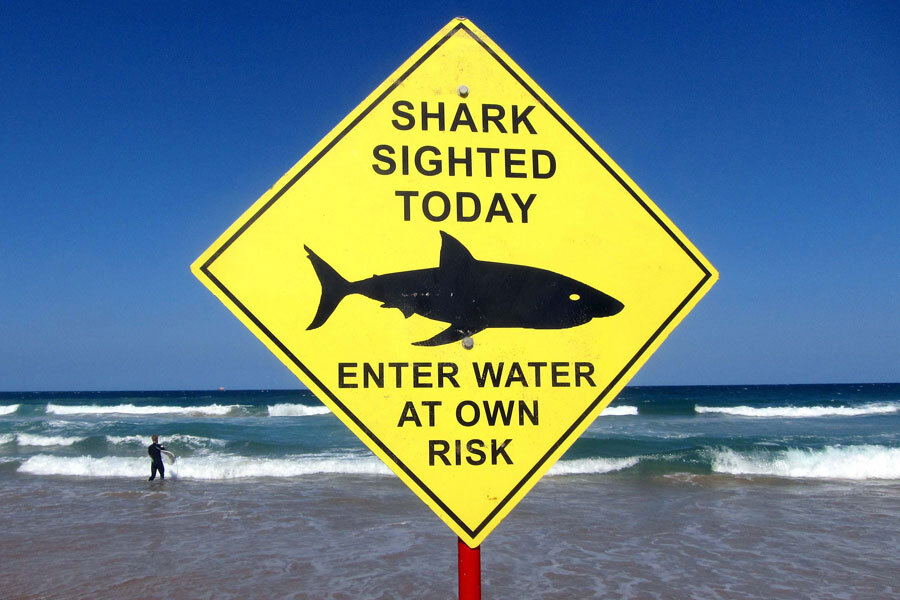Why the US leads the world in shark attacks
The year 2015 saw 98 unprovoked shark attacks worldwide, the highest yearly total on record.
The Florida Museum of Natural History maintains the International Shark Attack File (ISAF), a leading global database on shark attacks since 1958. With 98 unprovoked attacks, referring to incidents where a human was attacked without any provocation of the shark, 2015 had the highest rate on record. The next highest was in 2000 with 88 recorded attacks.
And the US led the world in shark attacks – by a lot.
There were 59 unprovoked attacks in waters off of the US coast, with Australia coming in second with 18 attacks, and South Africa in third with eight. Within in the US, Florida led the states with 30 attacks, followed by North Carolina and South Carolina each with eight.
While this data is accurate, it is being delivered out of context, say shark experts.
“Although the headlines say ‘attack,’ these are really more of encounters, they are nonlethal,” Neil Hammerschlag, Director of the Shark Research and Conservation Program at the University of Miami, tells The Christian Science Monitor in a phone interview Tuesday. “It’s important that we don’t create this hysteria that ‘shark populations are on the rise, attacks are on the rise.’ It’s important to remember that these aren’t mindless killers. They are social animals and ecologically important and their populations are in trouble.”
In fact, the fatality rate in 2015 was 6.5 percent, with six deaths. But 2000, the second highest attack year, saw 11 deaths with a fatality rate of 12.5 percent.
“This total is remarkably low given the billions of human-hours spend in the water each year,” ISAF explains.
Because shark populations are mostly declining throughout the world, experts contribute the higher rate of attacks to the higher number of humans in the water.
“The numerical growth in human-shark interactions does not necessarily mean there is an increase in the rate of shark attacks; rather, it most likely is a function of the growing human population,” ISAF explains in their press release. “The actual rate of attack likely is declining owing to the ever-increasing amount of time spent in the sea by humans.”
The state of Florida – which had more shark attacks than Australia and South Africa combined – also witnessed a record year for tourism. In November, Florida Gov. Rick Scott boasted the highest number of visitors of any nine months in the state’s history with 79.1 million visitors.
“We can and should expect the number of attacks to be higher each year,” George Burgess, director of the ISAF, tells The Tampa Bay Times “When we visit the sea, we’re on their turf.”
As the human population continues to grow, we need to prepare for coexistence strategies, says Hammerschlag.
“We need to learn to coexist with these animals because it is important that our oceans have sharks,” Dr. Hammerschlag tells The Monitor. Just like we put on our seatbelt before driving in our car, he explains, we need to prepare for danger-mitigation measures. “What things can we do to decrease our risk?”
And coexistence strategies are especially important with warming ocean temperatures, say experts.
“We’re going to be seeing more bites north of Virginia in the east and California in the west in the years ahead as long as this warming trend continues,” Burgess tells Reuters.
But even with warming waters and higher numbers of human swimmers, the odds of unprovoked attack are still low. In a shark attack risk comparison, people are twice as likely to be killed by a bear or alligator, and 75 times more likely to be killed by lightning.









